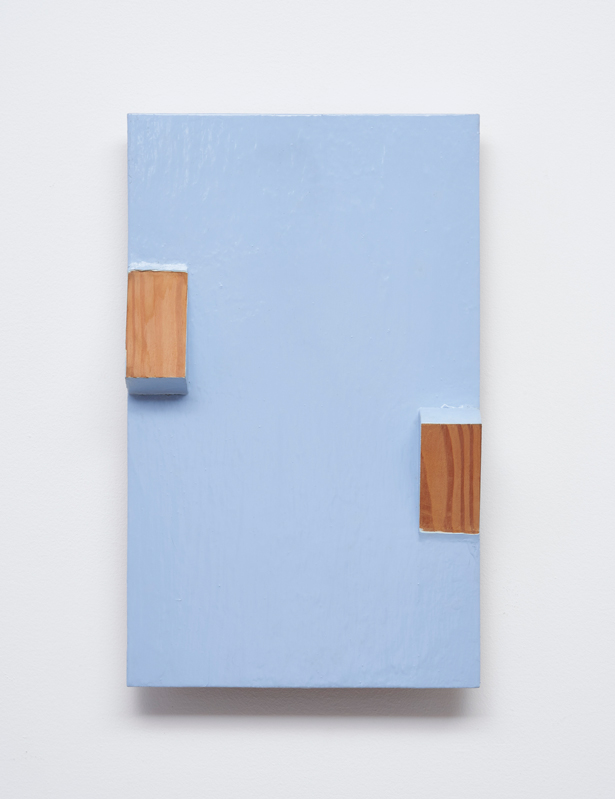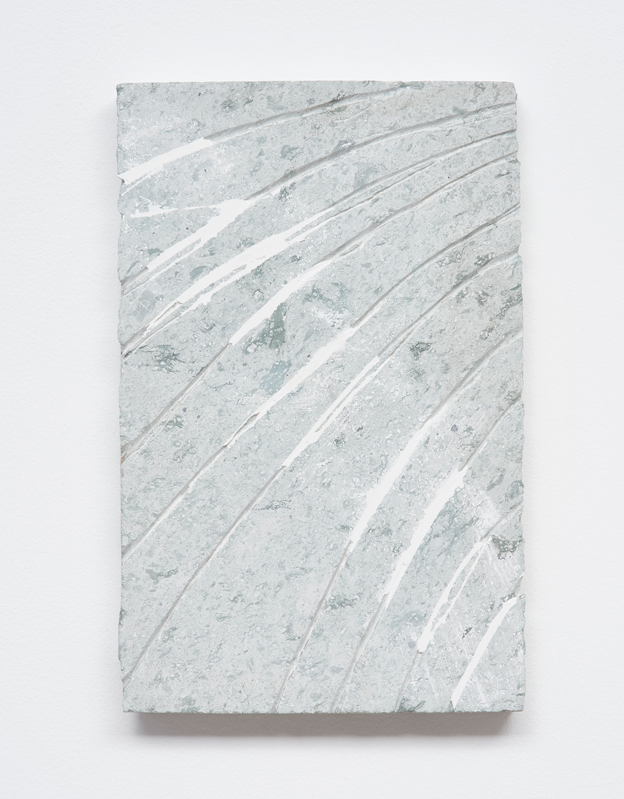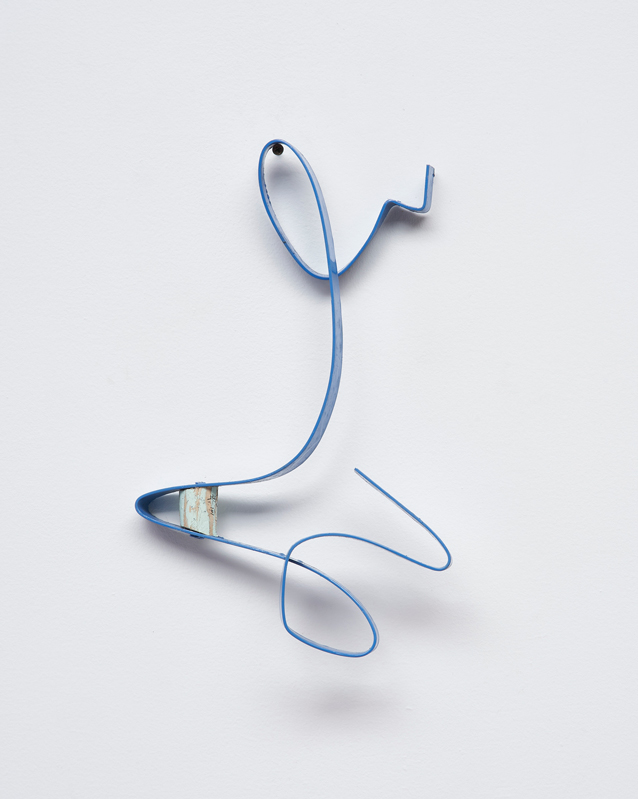Exhibition
Kishio Suga

Kishio Suga, Surface Logic, Opposing Spaces, 1995, Wood, acrylic, 39.8 x 24.5 x 6.3 cm. Courtesy of the Artist and Tomio Koyama Gallery.
Suga has held exhibitions of new works at our gallery for 10 consecutive years since 2015, including “Intentional Scenic Space” (2015), “Divided Orientation of Space” (2017), “Expanded Self-Space” (2018), “Measured Divisional Entities” (2019), “Released Scenic Space” (2020), “Gathered ” (2021), “Not Being Present, Not Being Absent” (2022), “Neither Things nor Sites” (2023), and “There Is Neither Such Thing as Being, Nor Such Thing as Not Being” (2024). This year, Suga will present his first exhibition at our new space in Kyobashi, titled “Existence Within Definite Contours” (2025).
At the Kyobashi gallery, Suga will exhibit new sculptures and installations, while the Roppongi and Tennozu spaces will also hold concurrent exhibitions of his work. In Roppongi, drawings from the 1970s and 80s and small three-dimensional works from the 1980s through 2000s will be exhibited. Meanwhile, the gallery in Tennozu will showcase activation videos, photographs, and drawings, as well as a series of works using paste on slate from the 1990s.
The catalog, which is published annually, features a special contribution from Simon Groom, Director of the Scottish National Gallery of Modern Art, who curated a two-person exhibition by Suga and Carla Black (2016) and wrote a text for the catalog of Suga’s solo exhibition at the Museum of Contemporary Art Tokyo (2015).
【About Kishio Suga and his work: a fundamental reassessment of conventional art, the state of the world, and ways of looking at it 】
Kishio Suga (1944-) was a key member of the Mono-ha art movement of the late 1960s and 70s. He subsequently went on to deepen the essential world of his works expressed by the diversity of the existence of things, and has carved out a unique niche as a leading contemporary practitioner of postwar Japanese art.
Suga’s thinking, which focuses on “things” (mono) themselves that were previously only everyday materials, the human beings who perceive those things, and their relationships with each other, continues to pose fundamental questions about existing art and ways of looking at the world, earning him a formidable international reputation.
Suga has participated in more than 400 exhibitions, and his works are in the collections of more than 40 museums in Japan and abroad, including the Centre Georges Pompidou, the Tate Modern, and the Museum of Modern Art in New York. He will be presenting a solo exhibition at Dia Beacon in New York opening July 19, 2025.
(For more details on Suga, please see: https://tomiokoyamagallery.com/en/artists/kishio-suga/)
【On Suga’s works: what things tell us, and a complexity that does not appear as such】
Regarding the new works at this exhibition, and his own practice, Suga says that he now works simply and quickly. “Simplicity is important to me now. I think my work from my younger days was rather complicated. To know what ‘things’ are saying, and a kind of complexity that does not appear as such — that is what is important, however. Works from a long time past and works from the present are continuous, and not divided by time. The thoughtfulness in a particular moment, however, changes what is important and how we see it.”
Suga sees things (mono) not as mere “solids” or “objects” that human subjectivity has imbued with meaning and significance, but rather as entities with their own unique logic and direction, a kind of substantial quality or “thickness” that incorporates within it the reactions of people, as well as a sense of contemporaneity and the present.
The role of the artist is to listen to and pick up on this. In his many texts and interviews, Suga often refers to the act of “seeing the ‘invisible’ that lies latent in ‘things.’”
It is not difficult to simply look at a thing. To know the inner nature and essence of that thing, however, is no mean feat.
Incorporated into Suga’s work is a kind of internalization of howincorporates the way in which the unique sense of existence and place (space) associated withinvolved in how a “thing” transforms itbecomes into a “work of art.” becomes internalized. By presenting a domain (edge) that alludes to the dual nature or presencehowmakes us think that there is something on both sides of that thing, as it were, Suga reveals the essence of that which lies within the thing.
This is also a situation in which “the invisible world appears through the visible,” thanks to the work.
In his text, Simon Groom states.
The works slowly, subtly, gently induce a different sort of looking: one in which the individual work before us, whilst whole and complete in itself, simultaneously induces a desire, practically a need, to view the next work, and a different arrangement of elements that appear at once so final and yet so contingent. The wonder is that a sense of the infinite should coexist with a sense of necessity.
Simon Groom, “Connection of Separated Causes,” Kishio Suga “Existence Within Definite Contours” exhibition catalogue, Tomio Koyama Gallery, 2025
Of his current work, Suga also had the following to say.
“Before, I would use iron, stone, and rope, but now I only use wood. Although wood suits me in terms of the feeling it gives me and how it relates to my consciousness, the way in which I use things is more important than the materiality of the object. Philosophy is necessary to look at things. The act of creating an artwork is not aboutThings are not ideas: thingsthey already have an existence. Unless you are constantly thinking about what state your actions and circumstances are in, rather than about methodologies, it is extremely difficult to succeed at creating something.” (from an interview conducted at Suga’s studio, February 2025)
Suga’s senses have become even more finely honed over the past decade. Even as he maintains an underlying strain of thinking, he is not averse to change. Thanks to this keen sensitivity to the spirit of the times and human consciousness, Suga’s works continue to express a sense of contemporaneity. He constantly poses us questions, presenting us with a fresh worldview where theory and things intersect with each other. We hope you will take the rare opportunity to visit this exhibition.

Kishio Suga, Inside the Stone, 1990, Putty on rock, 30.0 x 19.0 x 2.1 cm. Courtesy of the Artist and Tomio Koyama Gallery.

Kishio Suga, Direction of Wind, 2010-2011, Steel, acrylic, wood, 31.5 x 19.8 x 6 cm. Courtesy of the Artist and Tomio Koyama Gallery.
2025. 07. 11. (Fri) – 08. 09. (Sat)
Tomio Koyama Gallery (Roppongi, Tennoz)